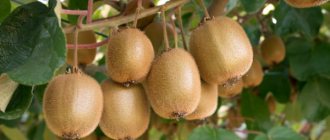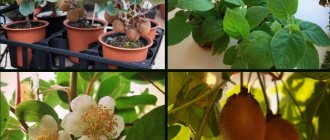Notice: Undefined variable: css_padding in /home/g/grigorig/prodachnika.com/public_html/wp-content/plugins/vote2x/vote.php on line 100 Notice: Undefined variable: css_opacity in /home/g/grigorig/prodachnika. com/public_html/wp-content/plugins/vote2x/vote.php on line 101 Notice: Undefined index: prodachnika_comvote2x3312 in /home/g/grigorig/prodachnika.com/public_html/wp-content/plugins/vote2x/vote.php on line 118 Hydroponics is a technique for growing indoor plants without adding soil. This method has a number of positive aspects, which will be described below. When using this method of growing at home, you need to know some nuances.
Advantages and disadvantages
Like any other planting method, hydroponics can have its advantages and disadvantages. On the one hand, crops grown using this method can be classified as environmentally friendly. In addition, it turns out to be much cheaper than planting plants in the ground. But on the other hand, substances added to solutions for planting flowers and plants contain chemicals. Therefore, supporters of environmentally friendly products may not accept this method. But hydroponics still has many advantages:
- Fertilizers are added to various solutions, and this gives good and rapid growth to plants.
- Plants without soil do not require much space and, in addition, this method saves your money.
- Despite the opinions of supporters of environmentally friendly products, fertilizers contain many chemical compounds. In fact, there may be much more of them in the soil. And it is still better to give preference to vegetables grown hydroponically than in soil.
- Insects and rodents are absent from the plant environment.
- When replanting plants, there is no need to clear the roots from the soil, and therefore they are not damaged.
Do you think that tomatoes grown in open ground taste better?
Not really
This method can be used to grow tomatoes, cucumbers, herbs, peppers, onions, grain crops, etc.
What are the disadvantages? If the nutrient solution is aimed at accelerating plant growth, then vegetable crops may contain more nitrates. But on the other hand, the disadvantage does not relate directly to the method itself, because hydroponics can be used without such chemicals. When purchasing fertilizers, be sure to look at what is included in their composition.
With this growing method, the person himself may make some mistakes. The soil intends to support the physiological and biological properties of the plant. Even if an excess amount of chemicals is added to it, it will gradually restore its composition and provide favorable conditions for vegetation. In hydroponics such properties are limited. If suddenly the solution has a high level of acidity, the entire crop will die.
Another disadvantage of hydroponics is the cost of special equipment. Such a system is either assembled independently, or you need to pay a certain amount for its purchase.
Types of Hydroponic Systems
There are six main types of hydroponic systems.
Wick system
The wick system is a passive hydroponic system. It works without a pump - the nutrient solution from the tank rises to the root zone through the wick due to capillary forces. The lower edge of the wick, made of cotton or synthetic fabric, is dipped into the nutrient solution.
The system is as simple as possible, but is not suitable for growing fast-growing and large plants.
Drip irrigation system
The drip irrigation system is also quite easy to use. Its essence is as follows: a pump connected to a timer supplies the required amount of nutrient solution to each plant through hoses. The plants themselves are planted in a special substrate (coconut fiber, mineral wool, perlite, gravel). With this growing method, there is a high risk of root rot.
Aeroponics
Aeroponics is a fairly new way of growing plants without soil. Their roots in such installations are in the air and irrigated with a nutrient solution using a sprayer. At the same time, the water breaks into tiny drops and becomes like fog.
Aeroponics is a rather expensive technology, but very effective: plants grow very quickly and produce rich harvests. However, any power outage can lead to their death.
Nutrient Flow System (NTF)
With this method of growing, containers with plants are placed at a slight angle in a special container. A nutrient solution is pumped into it. It washes the roots of the plants and then returns back to the reservoir.
Periodic flooding system
The essence of this growing method is to periodically flood and dry the near-root zone of plants. The nutrient solution from the reservoir is supplied to the pots using a pump on a timer. After some time, the liquid is drained back into the reservoir.
Just like in the previous two methods, with this method the success of cultivation depends on electricity. Any power outage will immediately affect the plants.
Deep water culture system (deep flow system)
Pots with plants are placed in the lid of a reservoir filled with a nutrient solution. With the help of a compressor it is constantly enriched with oxygen. Plant roots are immersed in the reservoir and constantly receive sufficient nutrition and oxygen.
This method is most often used for growing fast-growing and large-sized crops.
Tomato varieties for hydroponics
There are certain varieties of tomatoes that grow well using the hydroponics method. If the area is open, then any variety will be suitable for growing, but indoors there are certain varieties of tomatoes for planting without soil.
Hydroponics is suitable for the following types of tomatoes:
- An indeterminate type of tomato, that is, when the plant grows vertically and requires support for this - vertical strands or tying.
- Determinate plants have many shoots that grow in different directions and are low in height.
Indeterminate tomatoes take root better in open ground; they are not afraid of temperature fluctuations. Whereas greenhouse plants prefer an air temperature of at least +5 degrees. Plants that are grown hydroponically must be maintained by temperature equipment and a cooling system.
The most suitable tomato varieties for hydroponics:
- Beefsteak: Trust, Quest, Match, Blitz, Geronimo.
- Cherry: Favorita, Conchita (hydroponic cherry tomatoes).
- Cocktail: Picolino (red), Flavorino (plum).
- Truss (Cluster): Locarno (yellow), DRK 902 (orange), Tradiro (red), Ambiance (red).
What to grow
When starting production, you need to decide what kind of crop you intend to grow. Many plants are suitable for growing in hydroponics: ordinary vegetables - primarily tomatoes, peppers, cucumbers. You can grow various types of greens: dill, parsley, lettuce, onions and much more. Greens and lettuce are well suited for growing using this method.
Berries are also grown in this way. This is a popular option. Strawberries are often grown this way. True, berries with bushes that are too large are not suitable. Seedlings and flowers are perfect for this method. Medicinal plants can also be produced this way.
Potatoes are also grown using this technology. Potatoes are grown on pallets. The aero-hydroponics method is also used for potatoes.
When choosing a crop, you should first of all rely on market needs. Productivity will directly depend on the selected variety. Therefore, you should carefully select a variety and draw up a preliminary plan. It is better to choose varieties of vegetables and herbs that are well known to the entrepreneur, since a lack of experience with a particular crop can cause failure. It is more profitable to choose those varieties that do not require additional energy costs.
DIY hydroponics for tomatoes
It is possible to grow tomatoes hydroponically at home! Back in the 60s of the 20th century, the optimal method of hydroponics at home was developed:
- Fill ordinary pots with a well-washed and disinfected substrate, it can be gravel, expanded clay, coarse sand, moss, etc.
- Plant small pots of tomatoes and place them in larger pots filled with nutrient solution (hydroponic solutions come in different varieties).
- The pots will be removed periodically to monitor the growth of the root system.
- When the roots begin to penetrate through the holes in the bottom of the pots, the amount of nutrient in the large pot is reduced so that an air cushion of 3 to 8 cm in size forms between them.
- This will ensure a moist environment and oxygen supply for the roots.
Hydroponic tomatoes at home are no less tasty!
Sales market
One of the decisive roles in the success of an agricultural business is played by the presence of consumption points. Before you start directly growing vegetables and other crops, you need to think about future distribution channels. In addition, by assessing the situation, you will be able to understand how much of the product will be in demand. The following markets can be considered for this business:
- markets;
- vegetable bases;
- the shops;
- cafes and restaurants;
- wholesale warehouses.
If production volumes are small, then you can sell the products yourself on the market. Another option is to sell products at purchase prices - this is much faster and more convenient, but the entrepreneur will lose part of his profit.
Instead of resellers at the vegetable base, products can be sold to wholesalers. The advantage of this sales market is that wholesalers will carry out self-pickup, and the entrepreneur will not need to use his own transport.
It is possible to sell fresh vegetables, salad and herbs to cafes and restaurants at a fairly high price. In terms of cost, they win, but the volumes will be small. It should be added that in this case the businessman will need permits.
A convenient and profitable option is shops. They can sell large volumes of goods. To find new points of sale and establish relationships with them, a special employee would not hurt.
Hydroponics: tomatoes in greenhouses
You can purchase special ready-made structures at a gardening store. But this is not necessary, since improvised means can also serve well. Flower pots or plastic containers are quite suitable. The root system of tomatoes is not so powerful, so the height of the container can be on average 15-20 cm. Make holes in the bottom of each container. This is necessary to ensure that moisture does not accumulate in the pot. After this, a stand is built where all the pots with seedlings can be placed; its height should be 50-70 cm. A nutrient is added to it, and all the containers with vegetables are displayed. Tomatoes in a hydroponic greenhouse turn out amazing.
No. 1 Choosing an assortment of plants
The universal hydroponic method allows you to grow any crop. However, there are a number of factors that determine the possibility of such cultivation:
- Lack of cool winter conditions. All other things being equal, almost all plants can overwinter at temperatures above +15°C. For other species, there is a possibility of root rotting.
- Development of the root system. If the roots grow too much, the pot has to be replaced frequently, which adversely affects homeostasis in the system.
- The presence of tubers and rhizomes is a serious problem. In this case, there is a considerable probability that the roots will rot.
The hydroponic growing method works well with perennial plants. The most popular vegetable produced in this way on an industrial scale throughout the world is the tomato. Also often used are various varieties of lettuce, spicy kohlrabi cabbage, green onions, radishes, medicinal lemon balm, cucumbers, hot peppers, mint, and most bush berries. The most undemanding plants include ferns, succulents and horsetails, as well as annuals and flowers.
Planting and growing seedlings
There are two ways to plant a plant:
- The first way is using seeds. 2-3 seeds are planted in each pot. You can cover them with a plastic cup to create a greenhouse effect. When the seeds sprout, nutrients are added to them. As the plant grows, the solution is added regularly, as it tends to evaporate. Its concentration should be less and less each time. The compress is turned on several times a day.
- The second method is to use seedlings. In this case, the solution is added immediately. The seedlings are first thoroughly cleared of soil and washed. Otherwise, the growing method is the same as when planting seeds.
How to prepare the substrate?
Vegetables grow on a substrate. It is recommended to use expanded clay. If purchased from a hydroponics manufacturer, it is already ready for use. The material is clean, pH normalized. If expanded clay was purchased at a hardware store, then it must be washed well and checked for acidity.
The material is sifted and small particles are removed. They can clog the hydroponic system and slow down the passage of the solution through the pipes. Expanded clay is washed and kept in distilled water for 3 days. Next, check the pH. Normally, the acid-base balance is 5.5-6 units.
If the acidity of the water in which the expanded clay is located is increased, then soda is added to the solution. When acidity is low, orthophosphoric acid is introduced. Leave the pellets in water for another day to normalize the pH of the substrate.
The same is done with other material that was chosen as a substrate for plants. Subsequently, the expanded clay is dried.
Fertilizers for hydroponic tomatoes
Fertilizers for tomatoes grown hydroponically can be different. They are often used in combination. The most common additives are:
- potassium nitrate;
- potassium nitrate;
- ammonium nitrate;
- potassium chloride;
- superphosphate, etc.
The plants' nutritional needs for various beneficial elements will change as they grow, each phase will need a certain amount of feeding and fertilizer.
To properly grow tomatoes and other plants, many circumstances must be taken into account, from temperature regulation and watering to proper lighting. Plant nutrition is also important. Hydroponics is one of the methods of growing tomatoes, and high plant yields can be achieved. But you need to know many of the nuances of this technique.
You can also watch a video where they will show you how tomatoes grew hydroponically.
Equipment
A hydroponic business needs a specially equipped greenhouse. You can choose any other room, but the best option is a greenhouse. A hydroponics business plan should include purchasing the necessary equipment. The greenhouse must be equipped with a special system and structures. It will be necessary to bring communications to the greenhouse. Plants need lighting, regular watering with clean water, and a certain temperature regime.
There are different systems for this production:
- flow-through;
- drip;
- combined.
In a flow-through system, the roots are washed with a special substrate. In a drip system, drops of the substrate fall under the base of the stem.
Such production requires a large amount of equipment in addition to the system itself and the hydroponic installation. These are racks for vertical placement of vegetables and herbs, devices for water purification, a heating system, devices for cleaning harvested vegetables, berries and herbs, and packaging equipment. You will need storage space, a refrigerator, and a backup generator in case of a power outage.
Don't forget about consumables. First of all, this is the substrate and seeds. This category also includes packaging for transporting goods and other consumables.
Is it possible to grow vegetables in an apartment this way? It’s possible, but you won’t be able to grow a lot of vegetables and herbs in an apartment. It still depends on the size of your apartment, but it is unlikely that you will be able to start full-fledged production in it and launch sales. But you will have the opportunity to enjoy greenhouse vegetables, grown with your own hands.











